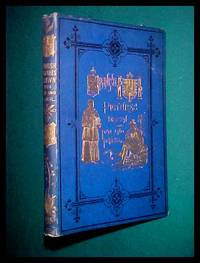Gustave Doré was one of the most acclaimed artists of 19th century France. He was mostly known for his engravings and illustrated texts; however, his paintings, drawings, and sculpture are also world renowned.
Paul Gustave Doré was born in Strasbourg, France on January 6, 1832. By five years old, he was already a prodigy artist, creating intricate drawings that belied his youth and experience. His fascination with the many fields of art continued to develop as he grew, and by the time he turned twelve years old, he began to practice sculpture and engraving.
Doré snuck away from his family while they were vacationing in Paris in 1847. He took a sample of illustrations to a publisher, who immediately recognized his talent and hired him. Left to live in the publisher’s care, the 15 year old Doré released his first illustrated book that very year. “The Labors of Hercules” was created entirely by young Gustave, from writing the text to preparing the drawings, and then carving them into stone for printing.
Doré’s most notable works include:
- New illustrated English Bible, his first international success
- Dante’s “The Divine Comedy” (for this work on “The Inferno” he was decorated with the Cross of the Legion of Honor)
- Cervantes’ “Don Quixote”
- “London: A Pilgrimage” by Grant & Co. Publishers
- Shakespeare’s “Tempest”
- Victor Hugo’s “Toilers of the Sea”
- Milton’s “Paradise Lost”
- Coleridge’s “Rime of the Ancient Mariner”
- Tennyson’s “The Idylls of the King”
- “The Works of Thomas Hood”
- Perrault’s “Fairy Tales”
- François Rabelais’ “Gargantua and Pantagruel”
- Edgar Allan Poe’s “The Raven”, published posthumously
1873 found Doré visiting England as a hero, and he was presented to Queen Victoria who thanked him for his work, asked him to inscribe a copy of the “Doré Bible,” and purchased several of his large paintings to display in Windsor Castle.
Doré continued to illustrate books, paint large canvases, and create sculpture until his death in Paris on January 23, 1883 at the age of 51. He is buried in the city’s Père Lachaise Cemetery.








Author Training…
[…]numerous creations in recent texts I have discovered[…]…
I have kind of a strange question. Gustave Dore is my grandmother’s uncle, and in the family bible that my grandmother kept there was a reference to him moving to Canada at some point. Do you have any information on that, or can you maybe point me in the right direction to search…I can’t seem to find anything about that anywhere I look. You’re help would be greatly appreciated.
Thank you for your comment! In all of the references I used for this post, none of them mentioned his traveling to Canada. He did not appear to be a great traveler, from what I can find, or at the very least records of his travels were not kept. Sorry that I could not be of more assistance in your search! Keep that Bible in good shape, and enjoy your piece of living history.
I have 2 portraits of family members. Do you know who we could contact that might be interested in buying them They were appraised for 17,500 in 2011.